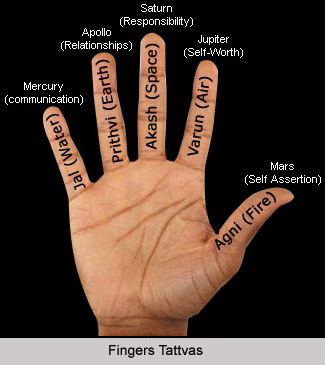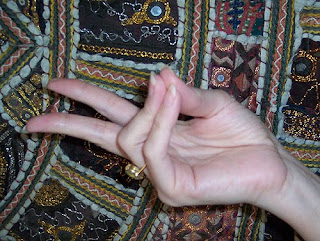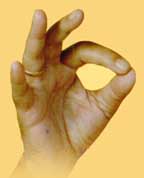Mudras or “hand gestures” are a very powerful ancient form of science which helps bring harmony among the various systems of the human body.
The ancient Rishis of India knew more about the human body than the present age medical science. In fact, the modern medical science appears to be novice in comparison to the advances made by these Rishis about human body, how it works and what is relation between body and external forces of the world.
Mudras are neural science. Just touching one fingertip to different others in some combination makes a circuit and energy flows, and all the systems involved in that circuit get that benefit.
There are hundreds of Mudras known to us, but let us look us at some of the major Mudras and their healing properties.
The five fingers of our hand represent the elements mentioned below.
The important 5 Mudras are,
1. Prana Mudra
Method: Bend ring finger and little finger and touch the tip of thumb with their tips keeping the remaining two fingers stretched.
Benefits: It improves immunity, improves the power of eyes and reduces eye related diseases, It removes the vitamin deficiency and fatigue.
2. Gyana Mudra
Method: This Mudra is made by joining the tip of the index finger and thumb. The remaining three fingers should be kept straight.
Benefits: Many mental problems get cured with regular practice of this pose. The body and mind both get relaxed. You can attain intelligence.
3. Apana Mudra
Method: This Mudra is performed by joining the tips of thumb, middle and ring finger. Pinky and index fingers are extended.
Benefits: This mudra may help you to eliminate impurities from your body i.e., excreta, urine, sweat. It particularly works with your kidneys, problems with gas in the digestive system, constipation and piles, and diseases related to your mouth, nose, ears and eyes.
4. Apana Vayu Mudra
Method: The Mudra is performed by touching the tips of the middle finger and ring to the tip of thumb, while the index finger touches the base of thumb and little finger stretched out.
Benefits: It benefits the heart and its practice during the attack of angina definitely helps to improve the coronary circulation and pain of angina is relieved within few minutes. It helps to reduce the gas formation in the body.
5. Varun Mudra
Method: This Mudra is achieved by joining the tips of the thumbs and the little fingers.
Benefits: By practicing this posture 5 to 30 minutes for 30 days, it helps to cure skin disease, excessive perspiration; it purifies the blood and balances its circulation, making the body flexible.






